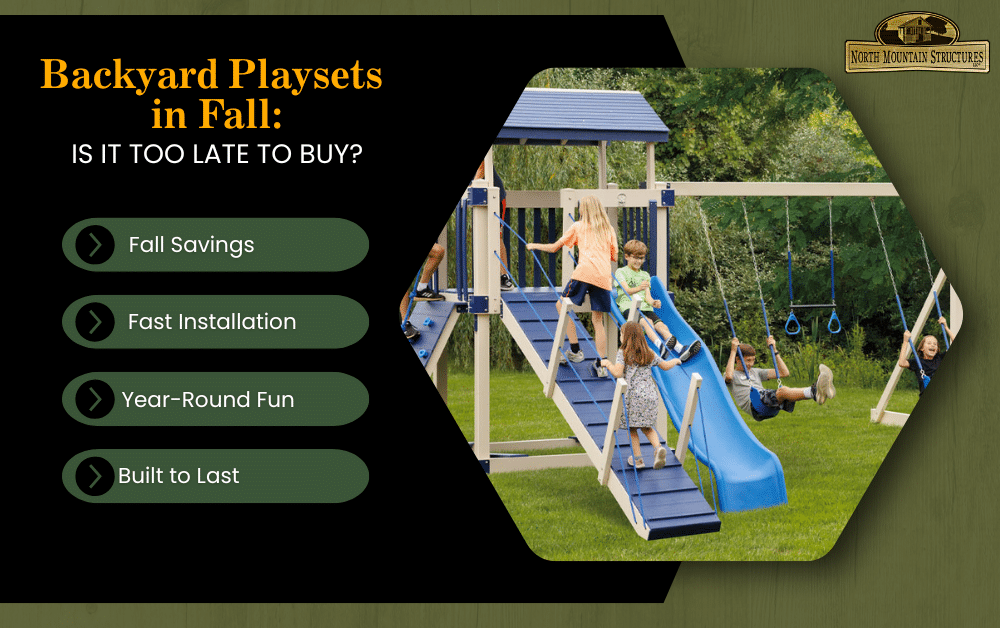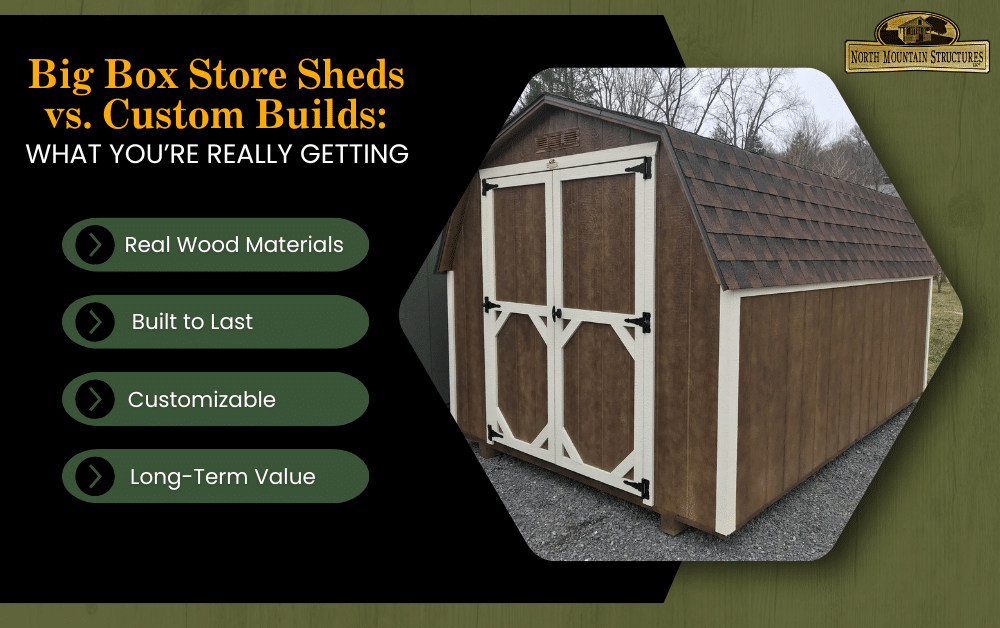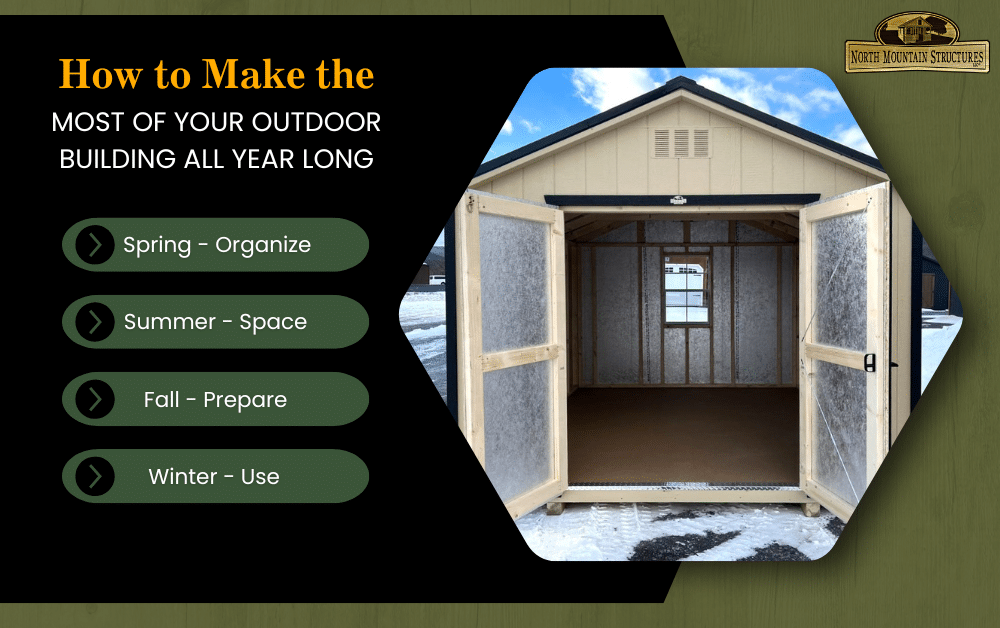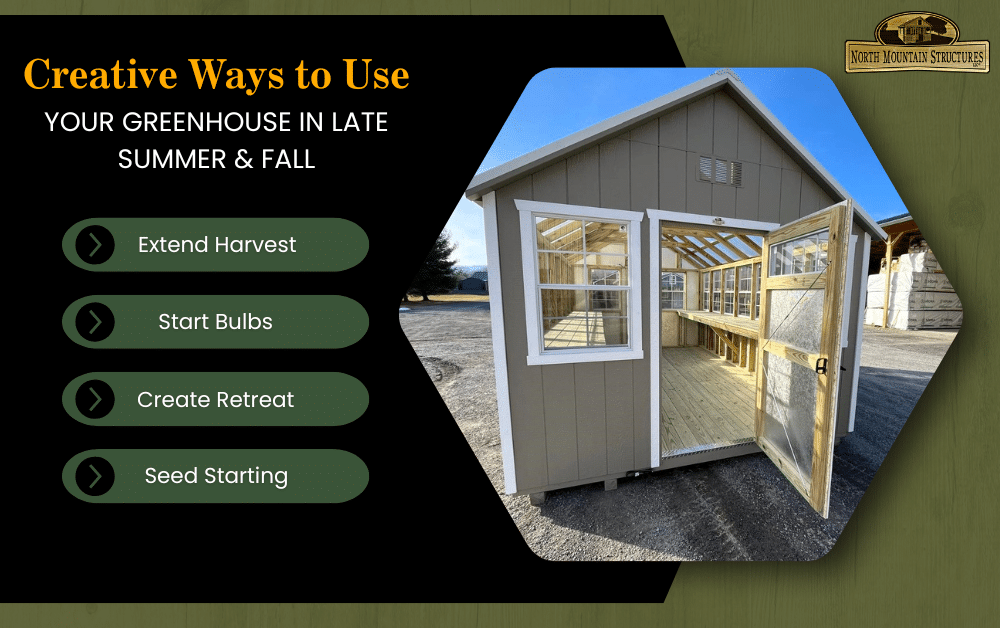Choosing a high-quality shed is more than just a purchase; it’s an investment in functionality and durability for your property. A well-built shed can significantly enhance your outdoor space by providing essential storage, improving organization, and even adding aesthetic appeal to your yard. Whether you need extra space for gardening tools, a home workshop, or simply a stylish addition to your landscape, the quality of your shed can make a big difference in its performance and longevity.
At North Mountain Structures, we specialize in crafting premium sheds designed to meet the highest standards of quality and functionality. Our commitment to exceptional materials and meticulous construction ensures that you receive a shed that not only meets your needs but also adds lasting value to your property. Discover how the right features can elevate your shed experience and find out why North Mountain Structures is your go-to source for top-notch outdoor solutions.
Materials and Construction
Durability of Materials
When selecting a shed, the choice of materials is crucial for ensuring its longevity and functionality. Here’s a comparison of common materials used in shed construction:
- Wood: Wood is a classic choice known for its aesthetic appeal and natural insulation properties. High-quality wood sheds offer durability and can be customized with various finishes. However, they may require more maintenance to protect against rot, insects, and weather damage.
- Metal: Metal sheds, typically made from galvanized steel or aluminum, are highly durable and resistant to fire, pests, and weather. They often require minimal maintenance and provide a sleek, modern look. However, metal sheds can be prone to rust and may lack the insulating properties of wood.
- Resin: Resin or plastic sheds are made from synthetic materials like polyethylene or polyvinyl chloride (PVC). These sheds are known for their resistance to weather, rot, and insects. They are lightweight, easy to maintain, and often come in a variety of colors and designs. However, they may not offer the same aesthetic charm as wood or the strength of metal.
Construction Techniques
The construction quality of a shed is vital for its stability and longevity. Key elements to consider include:
- Solid Framing: A high-quality shed should feature strong, solid framing that provides structural integrity and support. Look for sheds with reinforced joints and sturdy beams to ensure that the structure can withstand heavy use and external pressures.
- Quality Finishes: Finishes not only enhance the appearance of the shed but also contribute to its durability. Quality paint or sealant can protect against weathering, while proper sealing around doors and windows can prevent leaks and drafts.
Weather Resistance
To ensure your shed can withstand various weather conditions, consider the following features:
- Weatherproofing: High-quality sheds should include weatherproofing measures such as weather-resistant coatings, reinforced roofing, and proper sealing. These features help protect the shed from rain, snow, and sun exposure.
- Ventilation: Adequate ventilation is essential to prevent moisture buildup, which can lead to mold and rot. Look for sheds with built-in vents or options to add ventilation systems.
- Insulation: For sheds used as workshops or other functional spaces, insulation can provide comfort and protection against extreme temperatures. Consider sheds that offer optional insulation or plan for insulation installation if needed.
By carefully evaluating the materials and construction techniques of a shed, you can ensure that you invest in a durable, high-quality structure that meets your needs and withstands the elements.
Size and Design
Choosing the Right Size
Selecting the appropriate size for your shed involves evaluating both your space and your needs. Here’s how to determine the right size:
- Assess Your Needs: Consider what you’ll use the shed for—whether it’s for garden tools, a home workshop, or recreational equipment. Calculate the space required based on the items you plan to store or activities you intend to conduct inside.
- Measure Your Space: Evaluate the available area in your yard where the shed will be placed. Measure the length, width, and height of the space to ensure the shed will fit comfortably without overcrowding the area.
- Allow for Expansion: Think about future needs and allow some extra space for potential additions or changes in use. A slightly larger shed can provide additional flexibility and prevent the need for a second structure later on.
Design Flexibility
Customization options can enhance the functionality and aesthetics of your shed. Consider the following:
- Interior Layout: Choose from various interior configurations such as built-in shelves, workbenches, or tool racks to suit your specific needs. Customizable interiors can make the shed more functional and tailored to your activities.
- Exterior Design: Select design elements such as roof styles, window placements, and door configurations that align with your preferences. Many sheds offer options for customizing the exterior to reflect your personal style or complement existing structures.
- Additional Features: Incorporate features like skylights, additional ventilation, or external lighting to enhance the shed’s usability and comfort. Custom features can make your shed more versatile and enjoyable to use.
Aesthetic Considerations
The design of your shed should complement your home and garden for a cohesive look. Here’s how to ensure aesthetic harmony:
- Color and Style: Choose colors and styles that match or complement your home’s exterior. A shed that blends seamlessly with your existing architecture can enhance the overall visual appeal of your property.
- Architectural Details: Incorporate architectural details such as trim, shingles, or decorative elements that reflect the style of your home. Attention to detail can elevate the shed’s appearance and create a unified look with your garden or landscape.
- Landscaping Integration: Consider how the shed will fit into your garden design. Landscaping elements such as pathways, plantings, and surrounding features can enhance the shed’s appearance and create a more integrated and attractive outdoor space.
Functionality and Features
Storage Solutions
A high-quality shed should offer practical storage solutions to keep your space organized and functional. Consider the following features:
- Shelves and Racks: Built-in shelves and racks provide ample space for organizing tools, gardening supplies, or other items. Adjustable shelving can accommodate various sizes and types of storage needs.
- Hooks and Pegboards: Installing hooks or pegboards on the walls allows for hanging tools, equipment, or small items, making them easily accessible and reducing clutter on the floor.
- Compartmentalized Storage: For more specialized needs, look for sheds with built-in compartments or cabinets that can be customized to fit specific items, such as paint cans or sporting equipment.
Accessibility
Ease of access is crucial for ensuring that your shed is practical and user-friendly. Key accessibility features include:
- Wide Doors: Opt for sheds with wide, easily accessible doors that can accommodate larger items like lawnmowers or bicycles. Double doors or sliding doors can offer more flexibility and convenience.
- Ramps: Adding a ramp can make it easier to move equipment and materials in and out of the shed, especially if you have a lot of heavy or bulky items. This feature is particularly beneficial for users with mobility issues.
- Ease of Entry: Ensure that the shed has well-designed entry points that are convenient and safe. Properly placed door handles and secure locking mechanisms can enhance both accessibility and security.
Ventilation and Lighting
Proper ventilation and lighting are essential for maintaining a comfortable and functional shed environment. Consider these aspects:
- Ventilation: Adequate ventilation prevents moisture buildup and reduces the risk of mold and mildew. Look for sheds with built-in vents or the option to add windows that promote airflow and keep the interior dry.
- Natural Lighting: Incorporate windows or skylights to provide natural light during the day. This not only improves visibility inside the shed but also makes it more pleasant to use.
- Artificial Lighting: For use during darker hours, install reliable artificial lighting. LED lights or ceiling-mounted fixtures can ensure that the shed remains well-lit and functional, regardless of the time of day.
By focusing on these functionality and feature considerations, you can ensure that your shed is not only aesthetically pleasing but also highly practical and suited to your needs.
Safety and Security
Security Features
To ensure your shed remains secure and your belongings are protected, consider these essential security features:
- Locking Mechanisms: High-quality sheds should come with robust locking systems to deter theft. Look for options like heavy-duty padlocks, key locks, or combination locks for added security. Some sheds also offer built-in lockable doors for enhanced protection.
- Reinforced Doors and Windows: Choose sheds with reinforced doors and windows that are difficult to break into. Shatter-resistant or tempered glass in windows can further improve security.
- Security Accessories: Additional security accessories, such as motion-sensor lights or alarm systems, can provide extra layers of protection. These features can alert you to any unauthorized access and help keep the shed secure.
Safety Considerations
Ensuring the shed is safe to use is crucial for preventing accidents and injuries. Here’s what to look for:
- Safe Construction Practices: The shed should be built with high-quality materials and construction techniques to avoid structural issues. Ensure that the framing is solid and that the shed is anchored properly to prevent instability.
- Smooth Edges and Safe Design: Check that the shed has smooth, rounded edges to prevent cuts or injuries. Avoid sharp corners and ensure that all surfaces are finished properly to minimize hazards.
- Proper Ventilation and Fire Safety: Adequate ventilation helps prevent the buildup of flammable gases or moisture. Additionally, ensure that the shed complies with local fire safety regulations, such as having fire-resistant materials if required.
- Accessible Exits: Make sure the shed has clear and accessible exits in case of emergencies. Doors should open easily, and there should be no obstructions that could block a quick exit.
By addressing these safety and security features, you can ensure that your shed is not only functional but also a safe and secure space for your storage and recreational needs.
Maintenance and Longevity
Ease of Maintenance
To keep your shed in top condition with minimal effort, look for the following features:
- Low-Maintenance Materials: Choose materials that require minimal upkeep. For example, resin or metal sheds often need less maintenance compared to wood, which may require regular painting or sealing.
- Easy-to-Clean Surfaces: Opt for sheds with smooth, washable surfaces that are easy to clean. Features like removable shelves or easy-to-access areas can simplify cleaning and maintenance tasks.
- Preventive Features: Look for built-in features that help prevent common issues, such as weather-resistant coatings or rust-proof hardware. These features reduce the frequency of repairs and maintenance.
Long-Term Durability
To ensure that your shed remains functional and attractive over time, consider these indicators of durability:
- High-Quality Materials: Select sheds made from durable materials like treated wood, heavy-duty metal, or high-grade resin. These materials are designed to withstand the elements and resist wear and tear.
- Robust Construction: Check for sturdy construction techniques, such as reinforced framing and solid joinery. Well-constructed sheds are less likely to suffer from structural issues or damage over time.
- Warranty and Support: A good warranty can be a sign of confidence in the shed’s durability. Choose a shed from a manufacturer that offers a solid warranty and reliable customer support to address any potential issues.
- Weather Resistance: Ensure the shed is equipped with features to handle various weather conditions, such as waterproof roofing, UV-resistant finishes, and proper drainage. These aspects contribute to the shed’s longevity and performance in different climates.
By focusing on these maintenance and durability factors, you can choose a shed that not only meets your current needs but also provides reliable service and value for years to come.
Invest in Quality for Lasting Value and Functionality
In summary, selecting a high-quality shed involves carefully considering various features that contribute to its durability, functionality, and security. Key elements to look for include robust materials and construction, practical storage solutions, effective security measures, and low-maintenance requirements. Investing in a well-built shed not only enhances the functionality of your outdoor space but also adds long-term value to your property.
Don’t settle for less when it comes to your shed. Contact North Mountain Structures today to explore our range of high-quality sheds and discover the perfect solution tailored to your needs. Our expert team is here to help you find a shed that combines exceptional craftsmanship with practical features, ensuring you get the most out of your investment.







